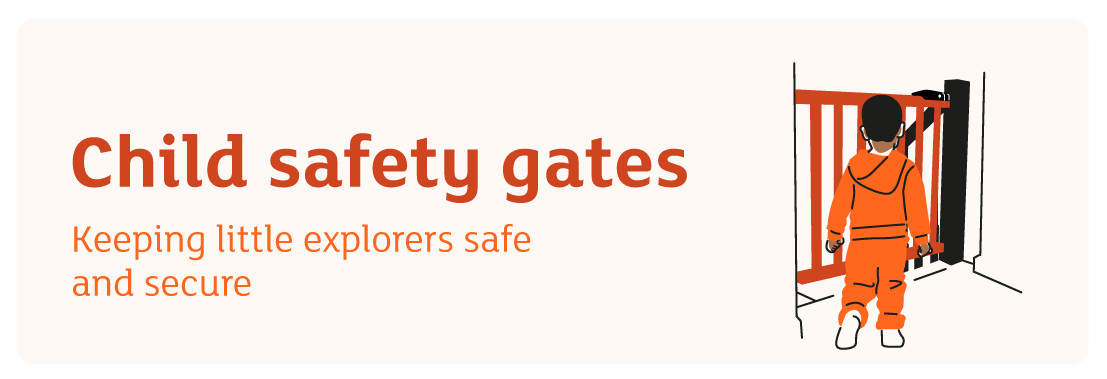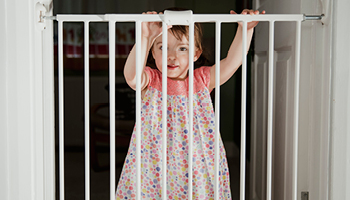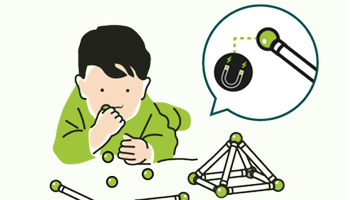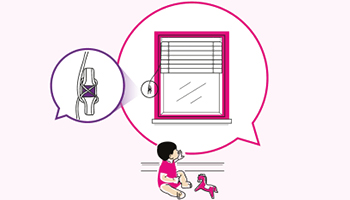
Child safety gates
Keeping your little explorers safe and secure
As parents, grandparents, and caregivers, your top priority is ensuring the safety and well-being of your children. One of the most effective ways to protect your little ones from potential hazards in the home is by using safety gates.
A child safety gate, or stair gate, is a protective barrier usually put in place to prevent children coming into contact with any hazards. It’s important to remember that a child that can crawl can get into danger.
The stairs are a common place for serious falls to take place, both for toddlers who are still finding their feet, and occasionally for adults who are carrying young children. In the UK over 40,000 children under five are hurt each year as a result of a fall downstairs.
The benefits of child safety gates
Prevent falls
The leading cause of injury among young children is falling. Safety gates at the top and bottom of stairs can significantly reduce the risk of dangerous tumbles.
Control access
Keep curious toddlers away from hazardous areas of the home, such as kitchens and bathrooms, where they might encounter harmful substances or hot surfaces.
Peace of mind
Knowing that your child is safely contained allows you to relax and focus on other tasks, reducing stress for the whole family. Remember, children must be supervised at all times.
Choosing the right safety gate
When selecting a safety gate, consider the following factors to ensure it meets your safety needs:
✓ Location
Decide where you need safety gates in your home. Safety gates should ideally be fit at the top and bottom of stairs. Safety gates are typically placed at the bottom and top of staircases, and the entrance to kitchen areas, and other areas where a child could potentially come to harm. An alternative to fitting at the top of stairs (if walls etc. are not suitable) is to fit on a bedroom doorway.
✓ Type of gate
Choosing the right type of baby gate is crucial for ensuring your child’s safety. For example, only screw-fit gates should be fitted at the top of the stairs. Gates come in various materials, including wood, metal, and plastic. Choose one that is durable enough to withstand daily use.
✓ Safety standards
Gates fitted should meet safety standards, BS EN 1930: 2011 (certified by the British Standards Institution). It should be marked with the standard’s number and the name or trademark of the manufacturer, distributor or retailer. Where possible, gates should be bought from a reputable retailer. If you are purchasing a second-hand/used product, ask questions about its history, it age and look for the safety marks listed above.
✓ 24-month limit
Safety gates can help children under 24 months of age stay safe. However, they are not recommended for children over this age.
Installation and maintenance
Safe positioning of safety gates may depend on several factors, including the wall structure you are fitting to, the condition and position of any newel post, and the presence of older children in the home who may leave the gate open or attempt to climb it.
To maximise the effectiveness of your safety gates, follow these installation and maintenance tips:
✓ Read the instructions: Always follow the manufacturer’s guidelines for installation. The safety gate should be fitted as supplied, in complete compliance with the manufacturer’s instructions and warnings. Incorrect setup can compromise the gate’s safety.
✓ Regular checks: Inspect the gates regularly for any signs of wear and tear, and ensure they remain securely in place.
✓ Adjust as needed: Safety gates are only suitable for children up to 24 months old - they should never be used with older children.
✓ Install restrictor: Many gates can be installed with a restrictor, allowing them to open away from the stairs. This is preferred to prevent the gate from opening onto the stairs, enhancing safety.
✓ Adjust as needed: As your child grows and becomes more mobile, reassess your safety gate setup to ensure it still provides adequate protection.
X Pressure-mounted gates must not be used at the top of stairs: They have a trip bar at the bottom, which poses a tripping hazard, and they rely on pressure to stay in place.
Remember: Safety gates are typically placed at the bottom and top of staircases, and the entrance to kitchen areas, and other areas where a child could potentially come to harm. An alternative to fitting at the top of stairs (if walls etc. are not suitable) is to fit on a bedroom doorway.
Child safety gates: how to keep your family safe
Consistent use
Always close and latch the gate, even if you’re just stepping away for a moment. An open gate is an invitation for accidents.
Teach safety
As your child gets older, teach them the importance of staying away from restricted areas. Reinforce these lessons regularly.
Supervision
While safety gates are a great tool, they are not a substitute for supervision. Always keep an eye on your child, especially when they are near potential hazards.
Futher safety advice and resources

Which type of gate should I use?
If you’re struggling to choose a gate, check out Which?'s essential guide to buying stair gates.

Magnet safety advice
From colourful fridge magnets to educational toys, magnets are commonly found in many households. However, they also pose significant hazards if not handled correctly.

Blind cord safety advice
Whether you already have blinds in or your home, or you're looking to install some, here is our top advice on how to keep your family safe from the dangers of blind cords.